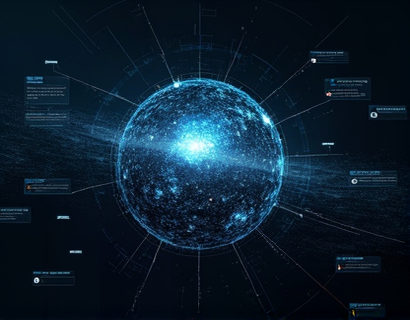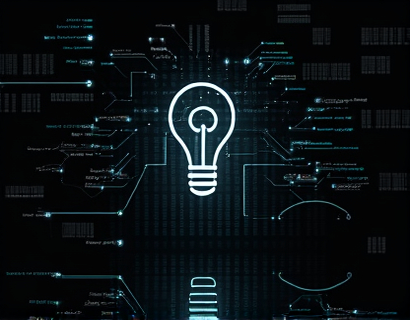Maximize Your Multi-Channel Announcements: A Strategic Guide for Businesses and Audiences
In today's fast-paced digital landscape, businesses and individuals face the challenge of effectively communicating with their audience across multiple channels. The ability to make impactful announcements that reach and engage diverse audiences is crucial for success. This guide provides expert strategies to streamline your multi-channel announcement process, ensuring your messages are seen and heard by as many people as possible. By optimizing your communication strategy, you can enhance audience connection and drive meaningful interactions.
Understanding Multi-Channel Communication
Multi-channel communication involves using various platforms and channels to reach your audience. This approach allows you to maximize your message's visibility and impact. Each channel has its unique characteristics and audience demographics, making it essential to tailor your announcements accordingly. Common channels include social media platforms, email newsletters, company websites, blogs, and messaging apps. Understanding the strengths and limitations of each channel is the first step in creating an effective multi-channel strategy.
Setting Clear Objectives
Before diving into the announcement process, define clear objectives. What do you aim to achieve with your announcements? Are you looking to increase brand awareness, drive traffic to your website, generate leads, or boost sales? Setting specific, measurable, achievable, relevant, and time-bound (SMART) goals will guide your strategy and help you evaluate the success of your announcements. For instance, if your goal is to increase website traffic, focus on channels that drive the most clicks, such as social media and email newsletters.
Know Your Audience
Understanding your audience is key to crafting effective announcements. Segment your audience based on demographics, interests, and behavior. This segmentation allows you to tailor your messages to resonate with each group. For example, a tech-savvy younger audience might respond better to announcements on Instagram and TikTok, while an older demographic might prefer email newsletters and LinkedIn. By personalizing your content, you increase the likelihood of engagement and conversion.
Crafting Compelling Announcements
The content of your announcements plays a critical role in capturing and maintaining audience attention. Start with a strong headline that clearly communicates the main point of your announcement. Use concise and compelling language to convey your message. Include a clear call-to-action (CTA) that tells your audience what you want them to do next, whether it's visiting your website, signing up for a newsletter, or making a purchase. Visuals such as images, videos, and infographics can enhance the appeal and shareability of your announcements.
Consider the tone and style of your announcements. Ensure they align with your brand voice and resonate with your audience. For instance, a formal tone might be appropriate for business-to-business (B2B) announcements, while a more casual and friendly tone could work better for consumer-facing announcements. Personalization and authenticity go a long way in building trust and connection with your audience.
Optimizing for Each Channel
Each channel requires a different approach to optimize your announcements for maximum impact. Here are some channel-specific tips:
- Social Media: Use eye-catching visuals and concise text. Leverage hashtags and engage with your audience through comments and direct messages. Post at optimal times when your audience is most active.
- Email Newsletters: Personalize the content based on subscriber preferences. Include a clear subject line and a compelling opening paragraph. Break up text with bullet points and images to enhance readability.
- Website and Blog: Ensure your announcements are easily accessible and well-integrated into your site's navigation. Use SEO best practices to improve visibility in search engine results. Include relevant keywords in your content to attract organic traffic.
- Messaging Apps: Keep messages short and to the point. Use emojis and emojis to add personality. Segment your audience to send targeted messages and avoid overwhelming users with too much information at once.
Understanding the unique features and user behaviors of each channel allows you to tailor your announcements for better engagement and reach.
Timing and Frequency
The timing and frequency of your announcements can significantly impact their effectiveness. Posting too frequently can lead to audience fatigue and disengagement, while posting too infrequently may result in missed opportunities. Use analytics to determine the best times to post on each channel based on your audience's activity patterns. For social media, tools like Hootsuite and Buffer can help schedule posts in advance, ensuring consistent and timely communication.
Additionally, consider the lifecycle of your announcement. For instance, a product launch might benefit from a series of teaser posts leading up to the launch day, followed by a main announcement and subsequent follow-up content to maintain momentum. This strategic timing can keep your audience engaged and interested throughout the process.
Monitoring and Analyzing Performance
To refine your multi-channel announcement strategy, it's essential to monitor and analyze the performance of your announcements. Use analytics tools provided by each platform to track key metrics such as reach, engagement, click-through rates, and conversion rates. This data will help you identify what works and what doesn't, allowing you to make data-driven decisions to optimize future announcements.
Set up regular reporting to review performance over time. Look for trends and patterns that can inform your strategy. For example, if certain types of content or channels consistently perform better, allocate more resources to those areas. Continuous improvement is key to maintaining and enhancing your multi-channel communication effectiveness.
Leveraging Technology and Tools
Leveraging the right technology and tools can streamline your multi-channel announcement process and enhance efficiency. Content management systems (CMS) like WordPress or Drupal can help manage and publish content across multiple platforms. Integration tools such as Zapier or IFTTT can automate workflows, saving time and reducing manual effort.
Social media management tools like Sprout Social or Buffer offer comprehensive features for scheduling, monitoring, and analyzing social media activities. Email marketing platforms like Mailchimp or Constant Contact provide advanced segmentation and automation options for email newsletters. By utilizing these tools, you can ensure a seamless and coordinated multi-channel communication strategy.
Building a Consistent Brand Message
Consistency is crucial in multi-channel communication. Ensure that your brand message is uniform across all channels to build recognition and trust. This includes using consistent branding elements such as logos, color schemes, and tone of voice. A cohesive brand presence helps reinforce your message and strengthens your brand identity.
Cross-promotion can also enhance consistency. Share your announcements across multiple channels to drive traffic and engagement. For example, promote a blog post on social media and include a link to your latest video on your website. This interconnected approach ensures that your audience receives a consistent and comprehensive message regardless of the channel they engage with.
Engaging with Your Audience
Multi-channel communication is not just about broadcasting messages; it's also about engaging with your audience. Respond to comments, messages, and reviews in a timely and personalized manner. This interaction builds relationships and fosters a sense of community. Use feedback to improve your announcements and address any concerns or questions your audience may have.
Host live sessions or Q&A events on platforms like YouTube or Facebook Live to create real-time interactions. These events can provide valuable insights into your audience's needs and preferences, helping you refine your communication strategy. By actively engaging with your audience, you can enhance their connection to your brand and increase loyalty.
Conclusion
Maximizing your multi-channel announcements requires a strategic and thoughtful approach. By setting clear objectives, understanding your audience, crafting compelling content, optimizing for each channel, and leveraging technology, you can enhance your communication effectiveness. Consistency, engagement, and continuous improvement are key to building a strong and connected audience. Implementing these strategies will help you achieve your communication goals and drive meaningful results for your business or personal brand.










































